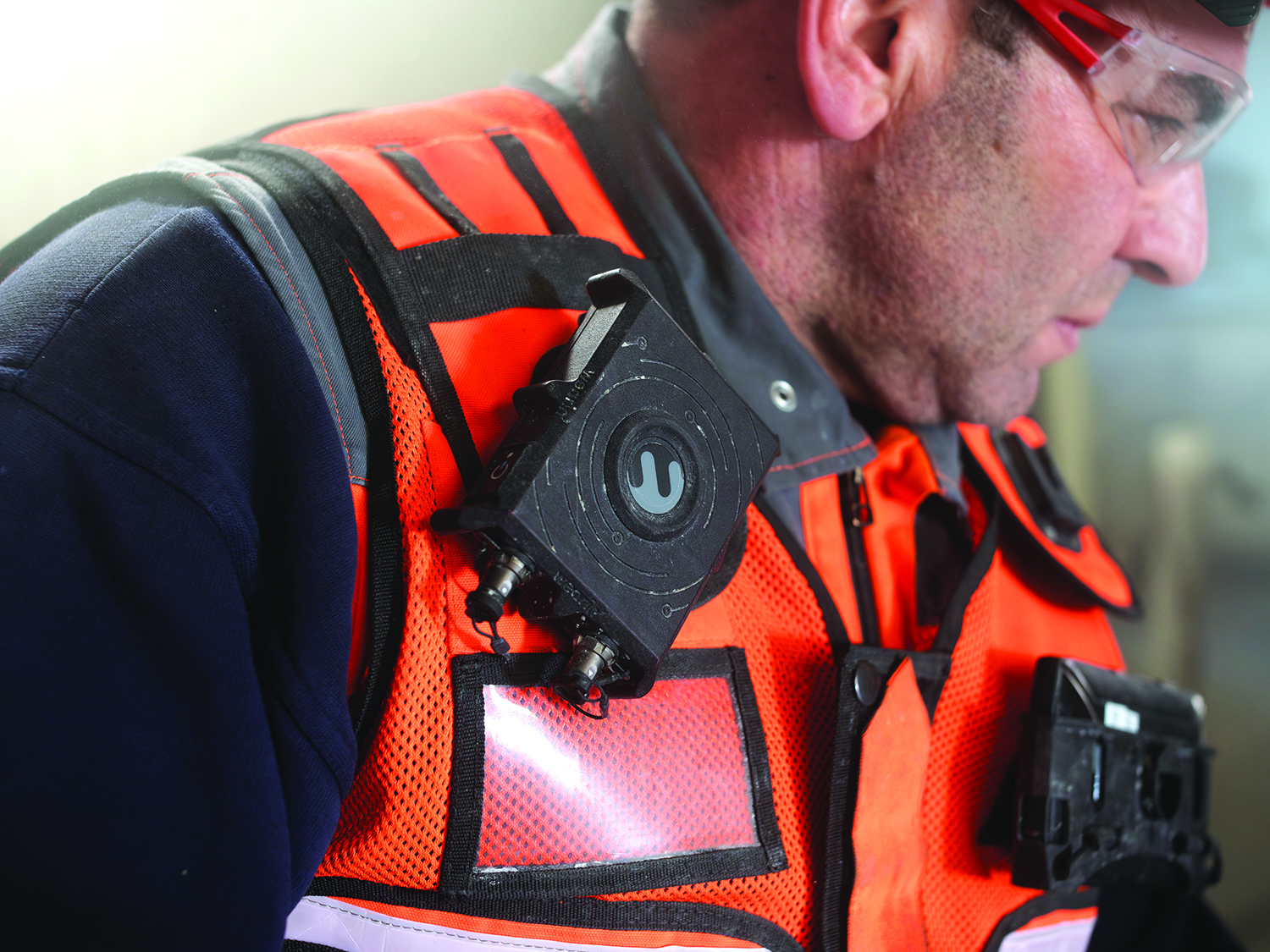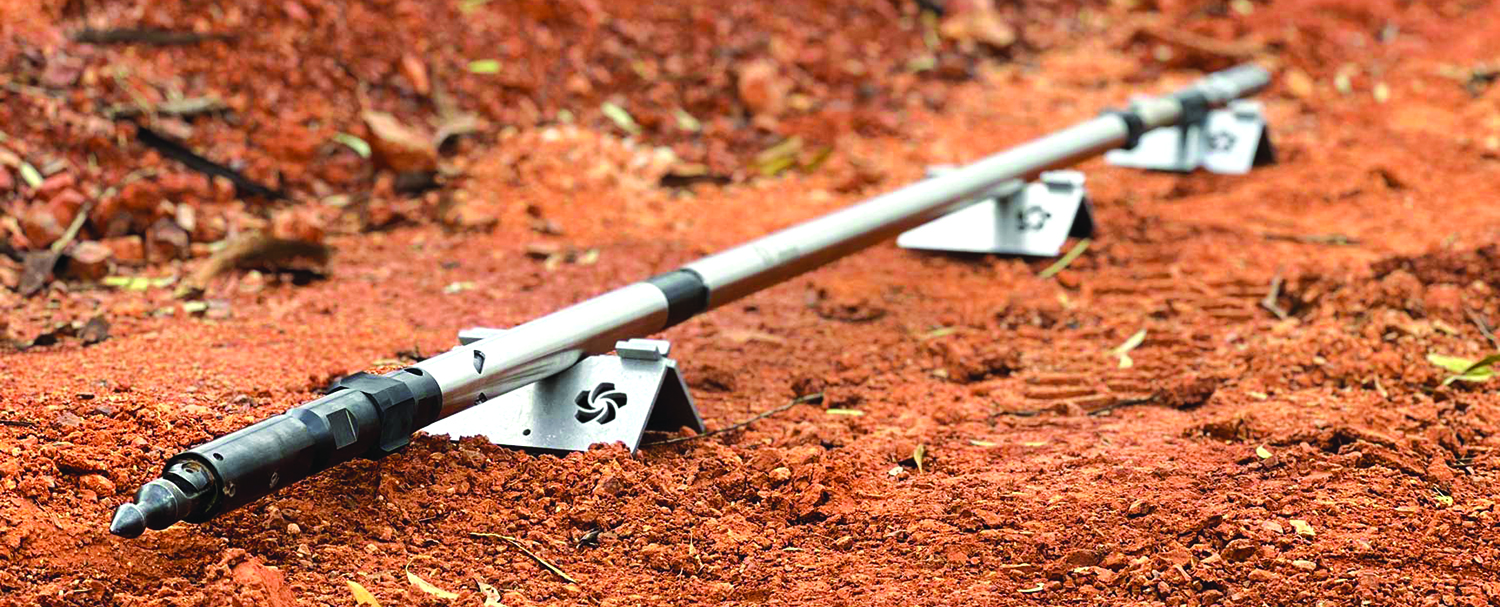
Conextivity Group, developer of the Wearin’ lone worker protection system shown here, said it provides an end-to-end connectivity solution that’s reliable, modular and scalable, capable of adapting to the specific requirements of each client.
A Switzerland-based technology group recently pointed to studies estimating that in Europe alone, there may be as many as 10 million lone workers, many of whom function in high-risk environments and could benefit from connected wearable IoT solutions designed to enhance safety and productivity. It’s a universal problem that has been exacerbated since the global Covid-19 pandemic changed the nature of work – and the workforce – in many industrial sectors, resulting in smaller employee rosters and more reliance on lone workers. A 2022 study of 250 lone worker professionals in North America indicated that almost one in five reported having an accident and encountering difficulty getting help, while just under half reported feeling generally unsafe about their work conditions.
As a potential solution, Conextivity Group highlighted its Wearin’ brand’s lone worker protection equipment, designed to reliably detect falls and alert a control center in the event of an accident. Wearin’ and Fischer Connectors comprise the group’s two core businesses focused on connectivity solutions that manage power and data flows seamlessly from sensors and devices.
Based on IoT technology and powered by AI, the Wearin’ product incorporates two platforms, one physical and the other digital, communicating with each other in real time. A device attached to the worker’s vest, called the Wearin’ Brain, embeds three safety alert and detection systems: one to alert the control center via an SOS button that can be activated manually in the event of an accident; an inertial sensor that can automatically detect a fall in case the alert cannot be raised manually; and GPS to pinpoint the precise location of the worker.
Data and alerts are sent and collected via the cloud to the Wearin’ dashboard integrated into a central monitoring system, allowing recipients to take appropriate emergency and rescue measures according to the alerts they have received.
Alvaro Goncalves, technical director at Wearin’, explained that in addition to the SOS button, the fall detection sensor and the GPS system, a 10-hour battery allows the Brain to last an entire shift without additional charging, and an LTE module provides for secure data transmission to the alarm center.
The fall detection sensor designed by Wearin’ minimizes the risk of false positives experienced with other, less advanced competing products, according to the company. Aurélie Balsa, embedded software manager at Wearin’, noted that: “The critical problem faced by this type of system is the frequency of false positives and the impact they have on the worker. The detection provided by other products is sometimes so unreliable that users, annoyed by repeated false alarms, end up disconnecting the system altogether. Wearin’s solution comprises hardware, firmware and embedded algorithms. Based on data from our accelerometer and gyroscope, our algorithms reduce false positives to less than 1%.”
Jonathan Brossard, CEO of Conextivity Group, commented: “The trend we’re seeing in this sector is a strong and genuine concern on the part of companies for the health and safety of their employees. These companies no longer want to limit themselves to ticking the boxes on safety checklists provided by regulatory authorities. They demand real solutions to the real-life issues specific to their operations.”
Drilling Technology Advances and Partnerships Offer Improved Performance
Two recent industry announcements offer companies interested in maximizing exploration and production drilling program performance some additional potential benefits. In November, drilling technology specialist Imdex reported that it was developing an improved production hole survey tool for underground applications that measures blast hole deviation using a north-seeking gyro. The product, called BOLT, is in the commercial prototype phase and has been installed at four sites with two trials underway.
According to Imdex, design changes have reduced product weight, making it easier to deploy overhead, thereby solving one of the key challenges of working in an underground environment. “BOLT addresses one of the biggest problems we have in blast hole surveying and that is the holes are drilled overhead,” said Imdex’s commercial manager – underground survey applications, Mike Ayris. “These can often be 5 m high. The only way of pushing a tool up the hole is from an elevated work platform.” Imdex has created a method of deploying the tool from ground level.
“The original design of the BOLT had a depth limitation of about 20 m, but most of our clients are drilling between 25 m and 30 m and it is the longer holes that need to be surveyed because they deviate the most. A typical drive development from one level to the next is roughly 15 m but mining companies are investigating ways to double this length to 30 m as a way of increasing efficiencies and reducing costs.
“A lot of drill rigs are designed for 15 m not 30 m, so they are pushed beyond their capabilities which then causes deviation, among other factors. The consequence of blast holes deviating can be a stope hang up or bridging, where the rock is fired but doesn’t break or fall, forming a wedge. Once that happens there is no way of getting the rock out. Companies will try drilling beside the bridge and use explosives but it’s highly dangerous and very ineffective,” said Ayris.

Veracio’s TruGyro, shown here, is offered as a precise, north-seeking gyrocompass technology that can find true north without being impacted by external magnetic interference. It provides standard north-seeking single shot and multi shot surveys along with continuous and orientation survey modes.
“Bridging is a major problem in underground mining, and blast hole deviation is one of the causes because if the blast holes deviate away from each other the explosive impact at the end of the hole is reduced. There are a lot of other factors, but surveying and measuring the deviation is one thing we can control by getting the information before blasting.”
“If you look at the mining process, money is spent exploring from the surface, then getting the tenement lease, creating a decline to the ore body, doing the development drives, and drilling the blast hole,” he said. “Drilling and firing is the last process, so you want to get it right. With BOLT we are trying to create a system that is on every underground mining operation so that blast holes are routinely measured.”
In early December, International Directional Services (IDS) and Veracio, a mining technology company formerly known as Boart Longyear’s geological data services division, announced a partnership to offer Veracio’s suite of driller-operated tooling to IDS’ clients.
The two companies explained that by combining IDS’s expertise in directional drilling and Veracio’s geological data collection, the partnership will empower clients to reduce unnecessary drilling costs, mitigate operational errors, minimize waste, and foster sustainable mining practices.
Key objectives of the partnership were described as:
• Enhanced drill hole data analysis: Deploying cutting-edge technology to improve the accuracy and quality of drill hole data analysis.
• Increased productivity: Leveraging Veracio’s fleet of technologies, to ensure that drilling is precise and efficient leading to better resource definition, safety and lower risks of operational errors, at lower cost.
• Client support and satisfaction: The partnership aims to deliver data-driven insights and innovative solutions.
The core of the partnership involves the use of Veracio’s TruGyro, a north-seeking gyro tool built to deliver precise data at depth in tough environments. IDS also currently serves as the distributor for Veracio’s TruShot, a magnetic survey tool that enables drillers to capture high-quality 3D hole path data. In addition to TruShot, IDS also distributes core orientation tooling on behalf of Veracio. As Veracio introduces new products to the market, IDS aims to expand its customer offerings.






